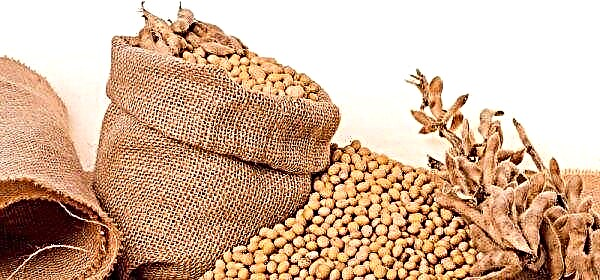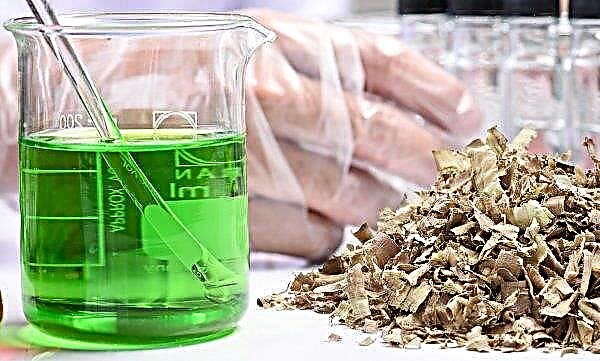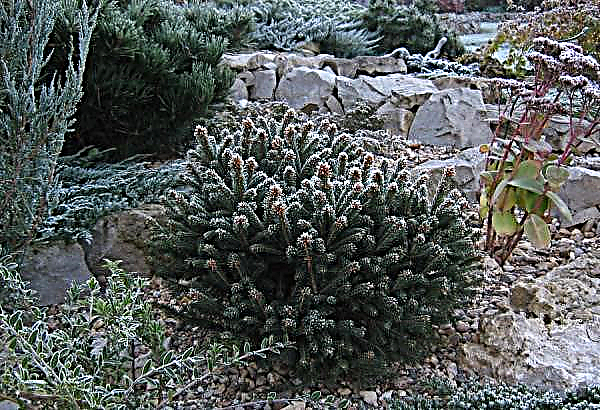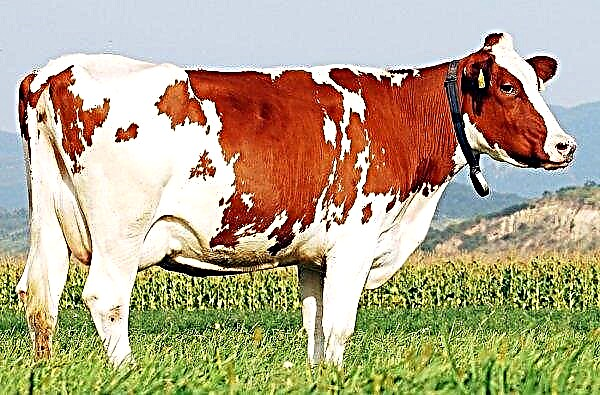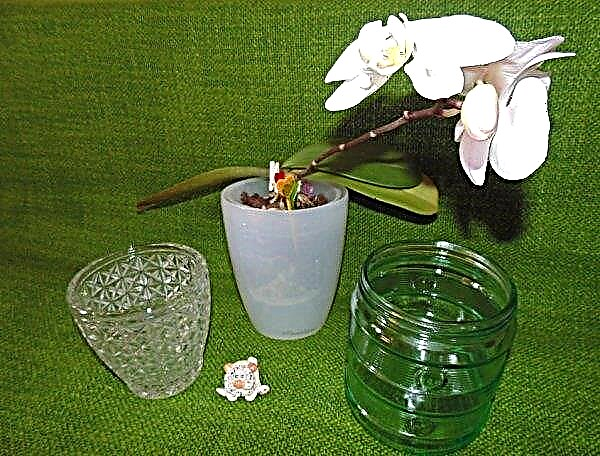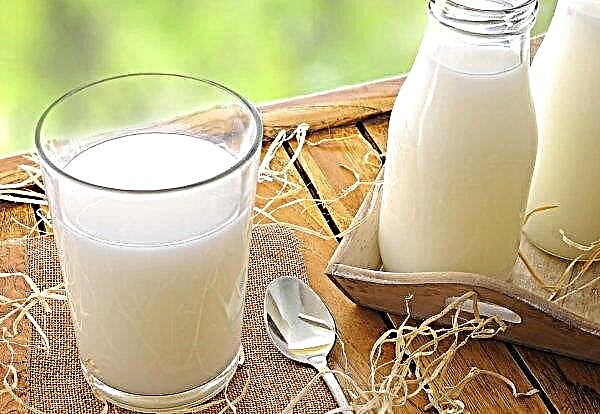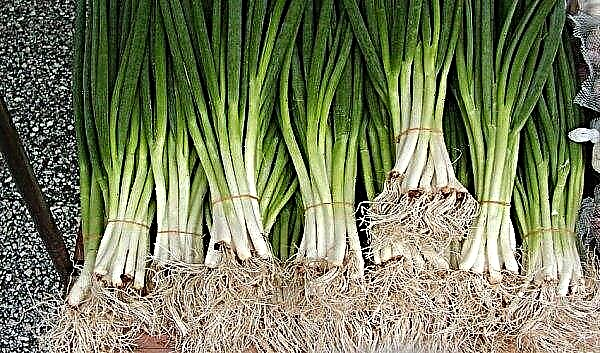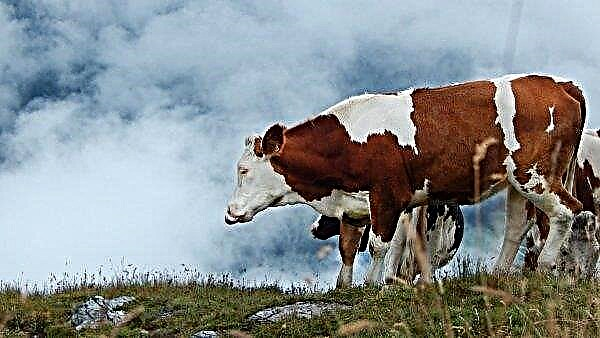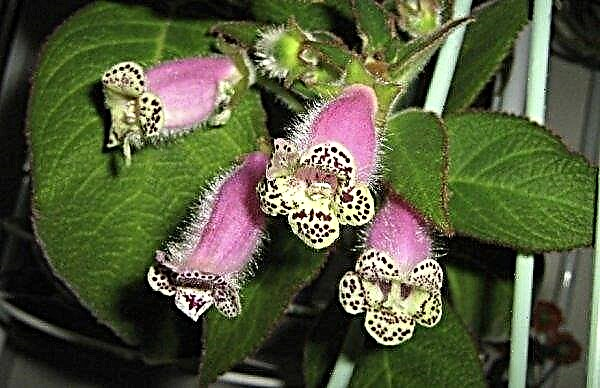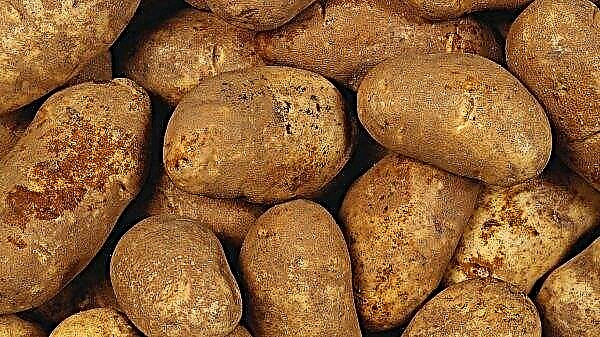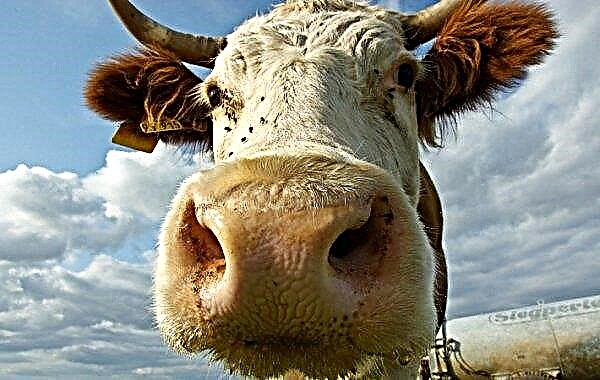A high yield of pepper in a summer cottage depends on many factors. And the first one is the right choice of culture variety. It is not a fact that the conditions on your site will please any varietal variety. One of the picky varieties is Caliph Pepper. How to cultivate it, read on.
Description and characteristic
Caliph is a hybrid of high-yielding and early ripe varieties of pepper. Japan is its homeland: Japanese breeders working for Sakata worked on the development of the hybrid form.
The plant can be recognized by an indeterminate compact bush, the height of which varies between 60–90 cm. The bush is abundantly covered with dark green thin foliage. You can enjoy pepper fruits after 95 days after planting.
Video: Characteristics of Khalif F1 pepper
The Caliph is characterized by a high yield of delicious juicy peppers, which can be recognized by the following characteristics:
- cubic form;
- colors: peppers can acquire from milky white to rich red shades;
- high juiciness and density of the pulp: the thickness of the walls of the pulp is 7–9 mm, while the vegetables are covered with a thin skin;
- sweet taste chords, without bitterness;
- fruit weight: from 180 to 210 g;
- fruit length: from 9 to 12 cm.
Did you know? In ancient times, pepper was used as a currency: a vegetable could not only pay for goods, but also pay a fine.
Advantages and disadvantages
- The eloquent advantages of the varietal variety Caliph are as follows:
- high productivity (14 kg / m²);
- impeccable taste;
- commodity appearance;
- the ability to eat vegetables during technical maturity, that is, when it becomes whitish;
- the size and weight of peppers are convenient for any culinary manipulations: it can be stuffed, pickled, fresh, salted;
- resistance to diseases and pests;
- uniformity of form;
- good transportability;
- the ability to store for a long period of time.
Planting and growing peppers
Planting and growing Khalifa involves simple agricultural manipulations. Read more below.

Optimal conditions
Before you start sowing peppers, you need to prepare the optimal conditions for growing seedlings. So, culture prefers heat. Before shoots appear, it is recommended to keep containers with future seedlings in temperature conditions of + 22 ° C, lighting is not so important. After the first sprouts appear, make sure that the daytime temperature in the room fluctuates between + 26 ... + 28 ° С, and the night temperature - + 10 ... + 15 ° С, and you also need to provide the sprouts with good lighting. So, from 7 am to 9 pm seedlings should receive light. If there is not enough daylight, then take care of additional light sources.
Pepper does not tolerate dry air, so you need to monitor the humidity of the environment in which it is located. The room should be regularly ventilated, and if necessary, spray the sprouts.
Important! Protect seedlings from drafts!
Dates and technology of planting seeds for seedlings
Experienced gardeners advise sowing pepper seeds for seedlings approximately 60–70 days before the planned planting in the greenhouse, and three months before planting in open ground.
The optimal sowing time is the end of February - the beginning of March.
Seeds are best purchased at a specialist store, or directly from the manufacturer via the Internet. When buying, be sure to require a quality certificate.
Immediately before sowing, the seed must be processed. So, it is necessary to place the seed in warm water (+ 50 ° C) for approximately 5 hours (until the seed swells), growth stimulants can be added to the water. To disinfect planting material, it is placed in a solution of potassium permanganate for 20-30 minutes. Then the seed is wrapped with a damp cloth and left for 2-3 days in temperature conditions + 22 ° C. It is also recommended to treat the seed with antifungal agents. Only after such manipulations do they begin to sow.
Initially, the container is filled with a substrate, which is prepared by mixing humus, sand and earth in a ratio of 2: 1: 1. For each kilogram of substrate, it is recommended to add 1 tbsp. l ash from wood. The tank is filled with soil, after taking care of drainage, and moisturized. Then put the seeds and sprinkle them with soil, the layer thickness of which is 5 mm. The optimal distance between the seeds (if planted in the container) is 1.5–2 cm. If the seed is sown denser, the sprouts that have sprouted will stretch and obscure each other.Important! It should be taken into account that the seedlings of Khalifa (as well as other pepper varieties) do not tolerate picks, therefore it is recommended to sow seeds in a separate container, for example, peat pots with a diameter of 8-10 cm and a capacity of 300-500 ml.
After sowing, the container is covered with a film of polyethylene and periodically ventilated, combining such a procedure with spray irrigation.
Seedling Care
With the advent of the first sprouts (the germination period depends on temperature conditions, approximately 5–7 days), containers with seedlings must be moved to a well-lit place, with an air temperature of + 15 ... + 17 ° С.
Provide seedlings with moderate watering, but do not overdo it. Watering the seedlings is necessary when the top soil layer dries. With excessive watering, seedlings can get sick on a black leg. It is important that the water for irrigation be warm - + 30 ° C. Cold water can lead to diseases of seedlings: it will become frail, weak, and may soon die.
Also, seedlings need regular ventilation and humidification.Did you know? Pepper juice — an excellent tool for relieving eye fatigue, increasing hair and nail growth, as well as strengthening them. You can improve the taste and healthy qualities of the juice by combining it with carrot.
If you sowed pepper in containers, then with the appearance of 4 real leaves on the seedlings, the seedlings need to be dived into separate containers. Seedlings must be carefully pulled out of the previous container, being careful not to harm the stem and roots, and placed in a new one.
When picking, the roots must be carefully straightened so that they are freely located in the tank. It is recommended to deepen the neck of roots by about 5 mm into the soil. Seedlings of culture are very painful to transplant, so its growth may become dull. To help seedlings overcome stress, they are sprayed with Epin.
Before transplanting seedlings to a permanent place, it must be fertilized with organic substances. The first time this is done 14 days after the dive, and the second - 14 days after the first feeding.
It is best to fertilize seedlings with complex preparations, such as Mortar, Fertik Lux, Krepysh, Agricola.
Important! Do not rearrange the seedlings to another place, immediately after a dive, it should be in the same conditions in order to resume growth soon and adapt to a new place.
Technology planting seedlings in a permanent place
It is possible to transplant seedlings to a permanent place in greenhouses already in April, if the planting is carried out in open ground, then it is best to do this in the middle - end of May, when seedlings will not be threatened by frost. Immediately before planting, seedlings need to be tempered: seedlings are kept in the fresh air and gradually increase the time of such procedures. It is important that the ambient temperature does not fall below + 13 ° C.
Pepper will feel great on the site, which before it was planted with onions, pumpkin, cabbage, cucumbers, carrots, zucchini. The culture will not settle well in the garden, where potatoes, tomatoes, eggplant, peppers grew before it.
As for the soil, the Caliph prefers loose and light. It is recommended to prepare the site since the fall, by deep digging and fertilizing (50 g of potassium and superphosphate per m²). In spring, the substrate is fertilized with ammonia - 40 g / m².
Planting scheme - 40 × 40, that is, 4 bushes of culture should be placed on 1 m². Plants must be provided with support.Important! Five days before the seedlings are planted, the soil must be decontaminated with a solution of copper sulfate (1 tbsp / bucket of water).
A separate hole is made for each seedling, the depth of which should not exceed the thickness of the substrate layer in the seedling tank. The roots cannot be exposed during transplantation, and their neck should be above the ground. The level of the garden on which the Caliph will be planted needs to be raised 25–55 cm above the rest of the garden because the variety does not like cold soil.
Pepper Care After Planting
Traditionally consists in watering, fertilizing, pruning and forming a bush. Details for each item.
Watering and feeding
The Caliph, like other pepper varieties, is afraid of droughts, so it must be watered every 2-3 days (morning or evening), and on dry days - in the morning and evening. The culture especially needs moisture during the ripening period of the fruit: with insufficient watering, the fruit walls will be thin. The optimum water temperature for irrigation is + 22 ... + 25ºС. Water for irrigation can be heated in the sun throughout the day. You can stop hydration only during prolonged rains. Type of watering - drip.
In addition to moisture, pepper needs fertilizer. For the season you need to organize 3-4 feeding. So, after planting, the seedlings may wither. To stimulate its growth, it is necessary to feed it with ammonia (10 g of acid / 10 l of water). You can also resort to the help of drugs such as Gumat or Novosil.Important! When watering the Caliph pepper, make sure that water does not get into the foliage, as this can cause burns, in the process of drying the water in the sun.
If the weather is hot for a long time, the Caliph needs to be sprayed with Epin to relieve stress.
During flowering, pepper needs complex dressings, which are necessary for the formation of ovaries. It is best to purchase fertilizers in specialized stores, buton, Ovary preparations, which contain azofoska, kemir, and crystallones, are suitable.
To improve the taste of the fruit, a week before their collection, the Caliph is fed with a solution of potassium sulfate (15 g / 10 l of water) and superphosphate (20-30 g of the substance is dissolved in 10 l of water).
Pruning
Experienced gardeners are advised to trim the pepper bushes during the growing season. This procedure is necessary so that the branches do not obscure each other. Its essence is to shorten the long shoots. It is recommended to carry out such manipulations every 10 days, and they should not stop even after harvesting, as new ones will ripen.
Bush formation
The formation of a bush of peppers is to remove all side shoots that grow below the first fork, and a growth point. Also, experienced gardeners are advised to remove the first flower of the Caliph, in order to obtain a good harvest.
Important! The shoot removal procedure should be carried out in hot, but humid weather, since in hot and dry weather the leaves prevent moisture from evaporating.
Grade Diseases and Pests
The Caliph steadily tolerates attacks of tobacco mosaic - the variety is immune to this disease.
But, like other pepper varieties, it can be affected by the following diseases, with which it is necessary to immediately begin the fight:
- Black leg. The disease is recognized by the brown color of the bottom of the stems, the decay of the altered areas, which leads to the death of the bush. The black leg develops if the crop is planted too thickly, or suffers from excessive moisture. To eliminate the disease, it is advisable to water pepper bushes with manganese solution (at the initial stage), loosen the soil, and carry out the earthing up of the root neck of the plant. It is possible to reduce soil moisture by sprinkling it with sand or ash.
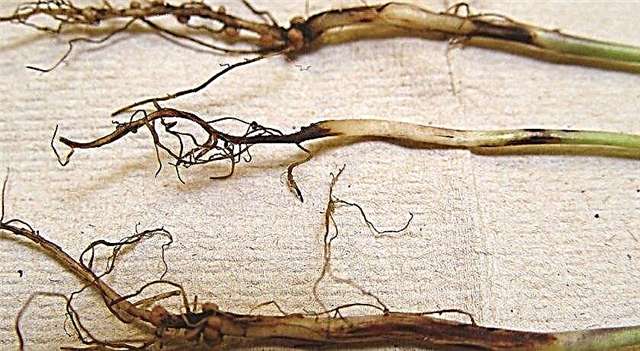
- Late blightcaused by the spread of fungal spores. Brown spots, like with the black leg, quickly affect the entire plant, including the fruits. Therefore, slow down the fight is not worth it. Affected bushes need to be treated with Gamair's solution (you can water - 1 tablet / 5 l of water, or spray - 2 tablets / 1 l of water), Alirina-B (watering: 2 tablets / 5 l of water; spraying: 2 tablets / 1 l of water) , Fitosporin-M (10 g / 5 l of water, sprayed).

- Vertex rot, which affects the fruits of the culture: black spots appear on their tips, which quickly spread throughout the fetus. The appearance of the disease is caused by insufficient watering, and also, if the plant needs calcium top dressing, and is oversaturated with nitrogen. Peppers that have already suffered from the disease cannot be reanimated, they must be destroyed, after which it is necessary to treat the bushes with a 0.2% calcium nitrate solution.

- White rot - A disease caused by fungi that occupy the lower part of the stem (closer to the root). The affected part of the stem is covered with white coating, sclerotia (dense black accumulation of fungal spores) form inside it, and soon the entire bush is intoxicated. A plant that succumbed to white rot attacks cannot be saved: they need to be destroyed as soon as possible. Since the disease is caused by high humidity and low air temperature, the fight against it is to water the bushes with warm water.

- Fusarium, which is manifested in the yellowing and twisting of the leaves of the Caliph caused by fungal attacks. The source of the disease is seeds infected with the fungus or soil. Methods of curing such a disease are not yet known, so the affected bushes must be destroyed (in any case, they will die in 10-20 days). You can try treatment with a 0.2% solution of Topsin-M or Fundazole, but this will only inhibit the development of the disease.

The pests that can attack the Caliph pepper include:
- Colorado potato beetle, the attacks of which are repulsed with a solution of the drug Commander (1 ml / bucket of water). Before spraying, it is recommended to collect insects from the bushes. If you do not start the fight in a timely manner, then the gluttonous beetles, together with their larvae, will leave only stems from pepper bushes.

- Slimmer. They harm the greens and fruits: they gnaw them and provoke decay. To eliminate such uninvited guests will help spraying with a solution of the arrow insecticide Strela (50 g / bucket of water).

- Whitefly, in the fight against which the drug Fosbetsid is effective (the solution is prepared strictly according to the instructions).

- Aphids, the danger of which lies in the fact that it literally sucks out all the juices from the plant, as a result of which it can die. Aphids quickly multiply and occupy all bushes, so when it appears, it is worthwhile to immediately treat the pepper with a solution of Karbofos or Celtan, with strict observance of the proportions specified in the instructions. You can also spray the bushes with your own hand made preparation from ash (1 tbsp.), Liquid sweet (1 tbsp.) And water (10 l).

- The little bear, which does not mind eating pepper leaves. The odor of kerosene, which is sprayed in places of its accumulation, will help to stop the uninvited guest.

Harvest dates and storage
You can enjoy the fruits of the Caliph pepper 95 later after planting. If you grow a variety in a greenhouse, then you can collect the first crop in July. Subject to the cultivation of varieties in the open ground, the collection dates are in August.
Store vegetables recommended in the cellar or basement. For storage, you need to select freshly picked fruits. Optimal storage conditions: temperature - 0 ... + 2ºС, humidity 80–90%. Under such conditions, the vegetable can be stored for about 2-3 months.
The most popular option for saving fresh pepper is to put it in the freezer.But, in such conditions, it is more practical to store the vegetable in a cut form.Important! In order to avoid problems during the cultivation of Khalif pepper, disinfect both the seed material and the soil before planting.
As you can see, observing the simple rules of planting and care, you can easily grow delicious and juicy bell peppers on your own garden plot, which brightly and usefully diversifies your menu.











